Dropshipping is a popular business model that allows entrepreneurs to sell products online without the need to keep inventory or handle shipping. It’s a flexible and cost-effective way to start a business, especially for those looking to enter the e-commerce world without significant upfront investment.
This business model has grown significantly in recent years, offering opportunities to individuals who want to run an online store but don’t want the burden of traditional retail logistics. In dropshipping, the retailer partners with suppliers who manage inventory and fulfill orders. The retailer simply focuses on marketing, customer service, and making sales.
Whether you're looking to start your own online business or explore new revenue streams, dropshipping presents an accessible pathway to e-commerce success. But what exactly is dropshipping? Let’s break it down.
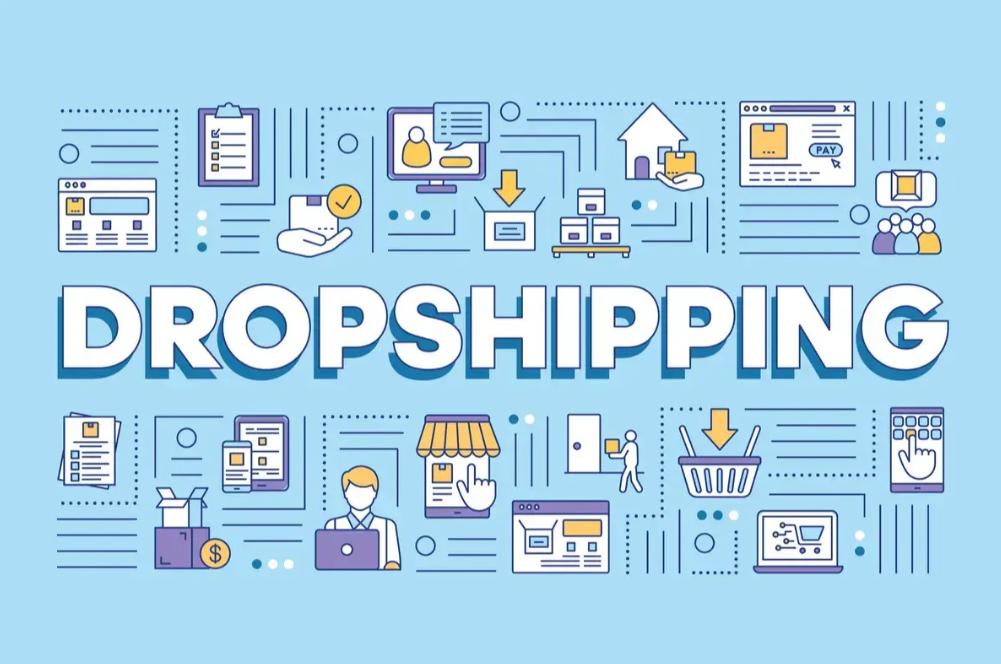
What is Dropshipping?
Definition: Dropshipping is a retail fulfillment method where an online store sells products without keeping them in stock. Instead, when a customer places an order, the store purchases the item from a third-party supplier who then ships it directly to the customer. This approach eliminates the need for the retailer to handle inventory or manage shipping logistics.
Key Characteristics:
- No Inventory Management: Retailers don't need to invest in or store products. This reduces overhead costs and risks associated with unsold stock.
- Order Fulfillment by Suppliers: Suppliers handle the storage, packaging, and shipping of products, allowing retailers to focus on marketing and customer service.
- Profit Margins: Retailers earn a profit by marking up the price of the products they sell. The difference between the retail price and the wholesale price constitutes the profit margin.
- Scalability: Since retailers don't manage inventory, they can scale their business more easily by adding new products or expanding to new markets without significant additional investment.
- Global Reach: With suppliers located worldwide, retailers can offer a diverse range of products to customers across different regions.
While dropshipping offers an accessible entry point into e-commerce, it's important to note that success in this model requires effective marketing strategies, reliable suppliers, and excellent customer service.
How Does Dropshipping Work?
Operational Process: Step-by-Step Breakdown
Understanding how dropshipping operates is crucial for anyone interested in starting an online business. Here's a simple, step-by-step guide to the dropshipping workflow:
1.Customer Places an Order: A customer visits your online store and purchases a product at the retail price you've set.
2.Forward the Order to Supplier: You then forward the order details to your chosen supplier, paying them the wholesale.
3.Supplier Ships the Product: The supplier processes the order and ships the product directly to the customer, often including your branding on the packaging.
4.Customer Receives the Product: The customer receives the product, and you handle any customer service inquiries, such as returns or exchanges.
This model allows you to run an online store without the need to manage inventory or handle shipping logistics. However, it's essential to choose reliable suppliers and maintain excellent customer service to ensure business success.
Roles Involved: Who Does What?
In the dropshipping business model, three key roles are involved: the supplier, the retailer (you), and the customer. Let's break down the responsibilities of each role:
The supplier is the backbone of the dropshipping model. They are responsible for manufacturing, storing, and shipping the products directly to the customer. To optimize these operations, many businesses turn to manufacturing software development services that streamline production and logistics processes.
- Key Responsibilities:
- Provide the products at a wholesale price.
- Fulfill the orders you forward to them.
- Handle inventory management and product availability.
- Ship the products to the customers and manage the logistics.
- Why It’s Important: Choosing a reliable supplier is critical for your business’s success. A slow or unreliable supplier can lead to delays, poor customer experiences, and damage your reputation.
- Retailer:
- As the retailer, you manage the online store, market the products, and handle all customer interactions. Your primary responsibility is generating sales and providing great customer service.
- The customer is the person who buys the product from your store. They interact directly with your store, not the supplier, so it’s crucial to offer a seamless shopping experience.
Summary of Roles and Workflow
In dropshipping, the roles of the supplier, retailer, and customer are all interconnected. The supplier handles inventory and shipping, the retailer manages the online store and customer experience, and the customer buys the products. By selecting trustworthy suppliers, optimizing your online store, and providing excellent customer service, you can build a successful dropshipping business.
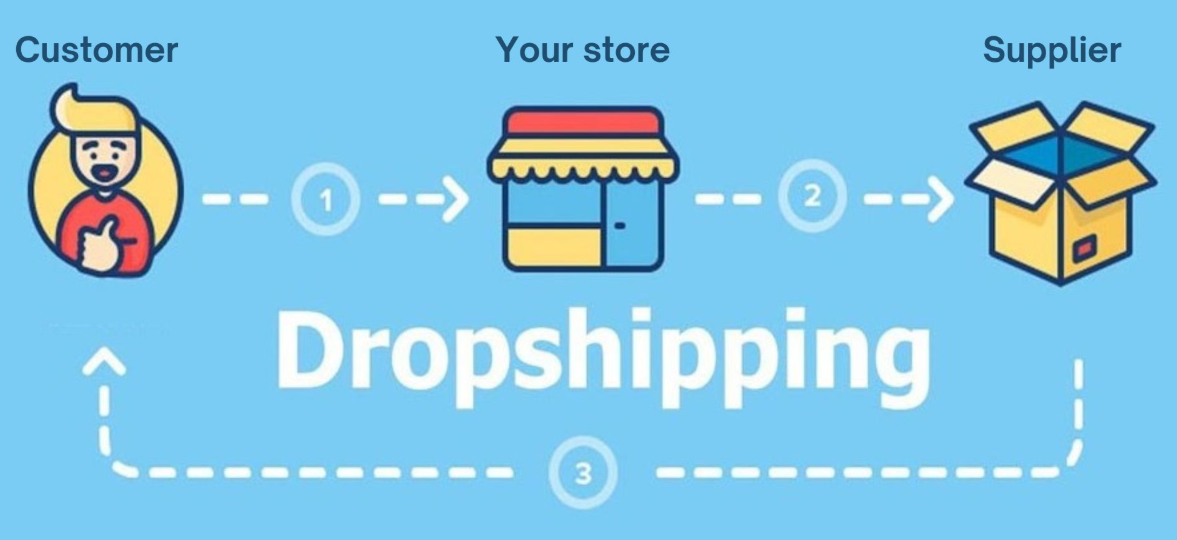
2025 Market Predictions: Insights into the Future of Dropshipping and Emerging Trends
The global dropshipping market is experiencing significant growth. As of 2024, the market was valued at $351.8 billion, with projections indicating it will surpass $500 billion by 2026, reflecting a compound annual growth rate (CAGR) of 24.39% .
Several key trends are shaping the future of dropshipping:
- Artificial Intelligence (AI) Integration: AI is revolutionizing product research, customer service, and marketing strategies. Tools powered by AI assist in identifying trending products, automating customer interactions through chatbots, and personalizing marketing campaigns, thereby enhancing efficiency and customer satisfaction .
- Sustainability and Eco-Friendly Products: Consumers are increasingly prioritizing sustainability, leading to a rise in demand for eco-friendly products. Dropshipping businesses that offer items such as biodegradable phone cases, reusable straws, and organic skincare products are tapping into this growing market .
- Niche Market Focus: To stand out in a competitive market, dropshipping entrepreneurs are focusing on niche markets. Offering specialized products allows businesses to cater to specific customer needs and build a loyal customer base .
- Social Media and Influencer Marketing: Platforms like TikTok, Instagram, and Facebook are becoming integral to dropshipping strategies. Utilizing social commerce features and collaborating with influencers enables businesses to reach a broader audience and drive sales .
Technological Advancements: Impact of Technology on Dropshipping Practices
Technological innovations are continuously transforming dropshipping operations:
- AI and Automation: The integration of AI and automation tools streamlines various aspects of the dropshipping business, from product selection to customer service, allowing entrepreneurs to focus on scaling their operations .
- Blockchain for Transparency: Blockchain technology is enhancing supply chain transparency by providing immutable records of transactions, thereby increasing trust between suppliers and customers.
- Voice Commerce: With the rise of voice-activated devices, voice commerce is becoming a significant trend. Optimizing product listings for voice search can help businesses tap into this emerging market .
- Augmented Reality (AR) and Virtual Reality (VR): AR and VR technologies are enhancing online shopping experiences by allowing customers to visualize products in their environment before making a purchase, leading to increased customer satisfaction and reduced return rates .
In conclusion, the dropshipping industry in 2025 is characterized by rapid growth and technological advancements. Entrepreneurs who adapt to these trends and leverage emerging technologies will be well-positioned to succeed in the evolving e-commerce landscape.
How to Start a Dropshipping Business
Starting a dropshipping business is simpler than most people think, but success requires careful planning and strategy. Here's a step-by-step guide that breaks down the key steps involved.
Step 1: Choose Your Niche
Choosing the right niche is the first crucial step to success in dropshipping. You want to focus on products that are in demand but not overly saturated. Here's how to choose your niche:
- Research Trends: Use tools like Google Trends alternative or social media platforms to spot trending products. Items related to health, wellness, eco-friendly products, and home gadgets are consistently popular.
- Focus on Passion: Pick a niche you're passionate about. Being genuinely interested in the products you sell will help you market them more effectively.
- Analyze Competition: Look at your competitors in the niche. Can you offer something unique or better? Use platforms like Amazon and eBay to study the market.
Step 2: Select a Platform for Your Dropshipping Business
Once you've decided on a niche, the next step is to choose the platform where you'll sell your products. The platform you select will influence your ability to scale your business and reach your target audience. Let’s explore some popular options:
- Shopify: A leading e-commerce platform that provides an easy-to-use, all-in-one solution for running an online store. It integrates with popular dropshipping apps, making it ideal for beginners and those looking to scale their business.
- Pros: Easy setup, excellent customer support, supports multiple payment gateways, and offers great scalability.
- Cons: Monthly fees, which can add up as your business grows.
- WooCommerce: A WordPress plugin that turns your site into a fully functional e-commerce store. It’s ideal for users already familiar with WordPress, offering full flexibility and customization options.
- Pros: Customizable, lower upfront cost if you're already using WordPress, great for scalability.
- Cons: Requires technical knowledge and ongoing maintenance, more complex setup compared to Shopify.
- TikTok Shop: As a social media platform, TikTok has become a popular choice for dropshipping due to its ability to reach a vast, engaged audience. Through TikTok's shopping features and influencer marketing, businesses can promote and sell directly on the platform.
- Pros: Massive reach, potential for viral marketing, easy integration with e-commerce tools.
- Cons: Requires ongoing content creation and engagement, competitive environment.
- BigCommerce: A robust e-commerce platform designed for fast-growing businesses. It has built-in dropshipping features and supports multichannel selling, which is ideal for large inventories.
- Pros: Excellent multichannel selling, strong inventory management, good for scalability.
- Cons: Higher transaction fees on lower plans, limited customization compared to WooCommerce.
Each platform offers unique advantages depending on your business goals, technical expertise, and budget. Whether you're looking for an easy-to-use store setup or a platform that supports advanced customization, choosing the right one will set the foundation for your dropshipping success.
Step 3: Find Reliable Suppliers
A crucial part of dropshipping is working with reliable suppliers who will fulfill your orders. Here are some tips for finding trustworthy suppliers:
- Use Dropshipping Marketplaces: Platforms like Spocket, AliExpress, and SaleHoo offer a wide variety of suppliers that integrate with your online store.
- Spocket: Focuses on suppliers from the US and EU, which can lead to faster shipping times. It’s great for quality products.
- AliExpress: A large, popular platform for finding suppliers from China. Be cautious about shipping times and product quality.
- SaleHoo: Offers a vetted list of suppliers, ensuring you work with trusted companies.
- Contact Suppliers Directly: Don’t be afraid to reach out to potential suppliers directly. Ask them about their shipping times, refund policies, and minimum order requirements.
- Test the Products: Before you start selling, order a sample product to check the quality and shipping time. This ensures your customers will have a positive experience.
Step 4: Set Up Your Online Store
Once you’ve chosen a platform and found suppliers, it’s time to set up your store. Here's what you need to do:
- Design Your Store: Use the store builder tools on platforms like Shopify or WooCommerce to design a visually appealing store. Make sure it’s easy to navigate and mobile-friendly.
- Add Product Listings: Use high-quality product images and write detailed product descriptions that include keywords like "best dropshipping products" or "affordable home gadgets." Good descriptions improve SEO and help customers make purchase decisions.
- Set Prices: Price your products by adding a markup to the wholesale cost. Remember to consider costs like platform fees, transaction fees, and marketing expenses when setting your prices.
Step 5: Market Your Dropshipping Business
After launching your store, it's time to get customers. Here’s how to market your dropshipping business:
- Social Media Marketing: Platforms like Facebook, Instagram, and TikTok are great for building an audience and driving traffic to your store. Consider using influencer marketing to reach a larger audience.
- Search Engine Optimization (SEO): Optimize your product pages and blog posts with SEO-friendly keywords to appear in search results. This can drive organic traffic to your store over time.
- Paid Advertising: Run Facebook or Google ads to target your specific audience. Start with a small budget and scale based on what works.
- Email Marketing: Collect email addresses from your visitors and send them regular updates on new products or sales to encourage repeat purchases.
Step 6: Scale Your Business
Once your dropshipping business is up and running, you’ll want to scale it. Here are a few tips:
- Expand Product Range: As you identify bestsellers, add more products that align with your niche.
- Explore New Markets: Consider targeting different regions or countries for your products.
- Automate: Use apps to automate processes like order fulfillment and customer communication to save time and reduce errors.
Tips for Dropshipping Success
Building a successful dropshipping business involves more than just selecting products and launching a store. There are various strategies and tools you can leverage to stay ahead of the competition, improve customer satisfaction, and protect your business from potential issues. Here are some expanded tips for dropshipping success:
Scaling Your Dropshipping Business
As your business grows, so do the opportunities. But scaling a dropshipping business requires a mix of strategy and tools. Here are some ways to scale successfully:
- Automate Your Operations: Use tools like DICloak to automate tasks such as account management, ad campaigns, and customer communication, freeing up your time to focus on growth.
- Expand Product Range: Once you identify your best-performing products, expand your offerings to cater to a wider audience.
- Reach New Markets: Look into entering new regions or demographics that fit your product range.
Use Analytics
To optimize your dropshipping business, understanding customer behavior is crucial. Tools like Google Analytics or platform-specific analytics can help track essential metrics like page views, customer demographics, and conversion rates. Here’s how analytics can boost your business:
- Identify Popular Products: By analyzing the performance of products in your store, you can identify which items generate the most interest and focus on promoting them.
- Improve Customer Experience: Use behavioral data to identify pain points in the customer journey. Whether it’s abandoned carts or slow loading times, fixing these issues can improve conversion rates and customer satisfaction.
- Adjust Marketing Strategies: Based on your analytics, you can refine your marketing efforts, targeting specific customer segments and testing different approaches.
Monitor Trends
The e-commerce world is constantly evolving, and it’s important to stay updated with market trends. Tracking emerging trends allows you to adjust your product offerings and adapt your marketing strategies. Here’s how:
- Use Trend-Tracking Tools: Google Trends, social media platforms, and industry blogs are valuable resources for identifying trending products.
- Follow Influencers and Market Leaders: Many trends emerge from social media influencers or well-established market leaders. By staying connected with industry leaders, you can gain insights into the next big thing in your niche.
By leveraging these strategies and tools, you can build a sustainable, scalable dropshipping business while mitigating risks like account bans and competitor tracking. Maintaining a focus on excellent customer service, monitoring trends, and using the right technology will ensure long-term success in this competitive industry.
Managing Risks and Enhancing Security of Dropshipping Business
While the tips above are key to growing a successful dropshipping business, they come with their own set of risks. Managing multiple accounts and accessing restricted platforms can expose your business to threats like account bans and security breaches. DICloak is here to help mitigate these risks with its powerful anti-detect features.
- Avoiding Account Bans and Restrictions:Operating multiple accounts on platforms like Shopify or Amazon can lead to account suspensions if the platform detects shared IP addresses or browser data. DICloak solves this by masking your digital footprint, creating unique browsing environments for each account. It also allows you to bypass geographical restrictions, helping you access platforms that might otherwise be blocked.
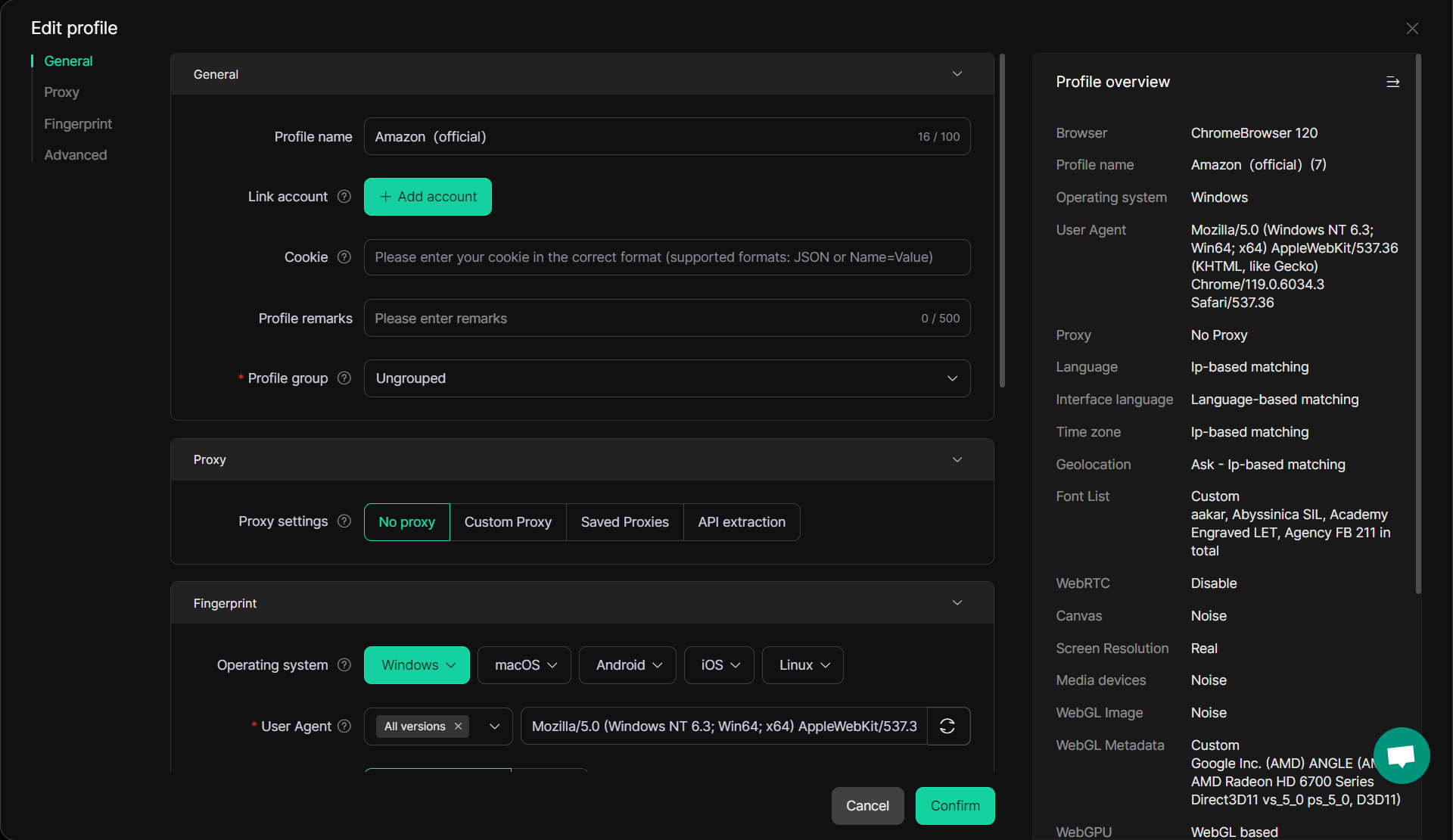
- Managing Multiple Accounts Efficiently and Safely:With DICloak, managing several accounts becomes easier and safer. You can set role-based access for your team members, assigning them specific permissions like viewing, editing, or publishing. Additionally, DICloak’s operation logs track all activities, preventing misuse and ensuring that your business data remains secure.
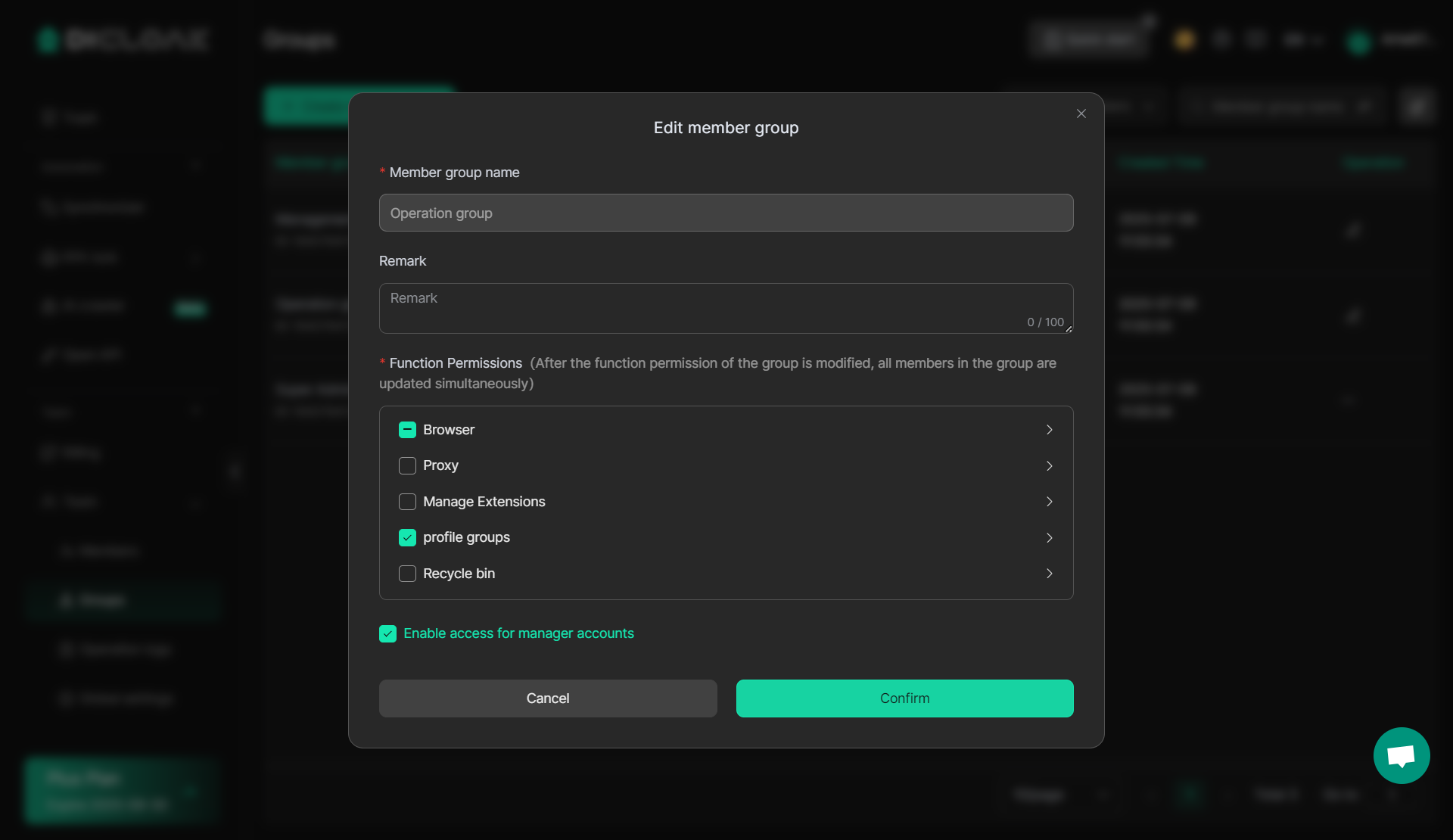
- Improve Web Scraping Efficiency:DICloak enhances web scraping efficiency with its AI-powered capabilities, offering e-commerce-specific scraping templates. Simply input a prompt, and you'll receive valuable reports, such as product review analysis and competitor analysis. This feature streamlines the process of gathering crucial data, allowing you to stay ahead of the competition and make informed, data-driven decisions for your dropshipping business.
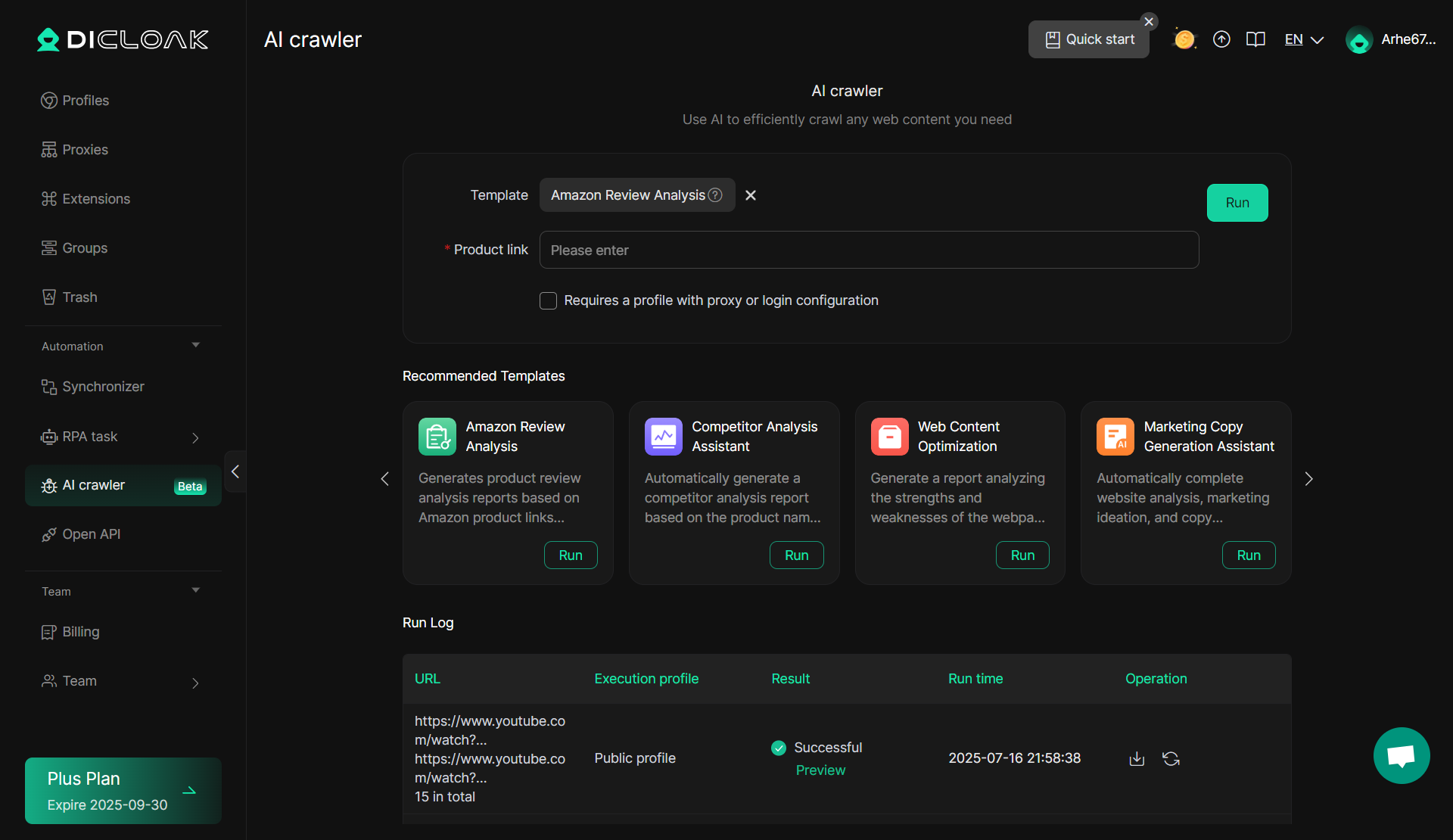
By integrating DICloak into your dropshipping strategy, you can protect your business from common risks, streamline operations, and focus on growth with peace of mind.
Want more information for Dropshipping?→How To Target USA TikTok For Dropshipping in 2025! (Step-By-Step Guide)
→AliExpress Dropshipping Mastery: Store, Products & Accounts Guide
→Do THIS To 10x Your Sales With Dropshipping (Shopify Hacks)
Common Questions About Dropshipping
Q1: What is Dropshipping and How Does it Work?Dropshipping is a business model where an online store sells products without holding any inventory. Instead, when a customer places an order, the store purchases the product from a third-party supplier who then ships it directly to the customer. This means the retailer never handles the product physically, allowing them to focus on marketing, sales, and customer service.
Q2: Is Dropshipping Profitable?
Yes, dropshipping can be profitable, but it depends on various factors, including the niche you choose, the products you sell, and how well you market them. The profit margins tend to be lower compared to traditional retail due to the reliance on suppliers, but it’s still a viable way to make money with minimal upfront investment. Success in dropshipping requires good supplier relationships, effective advertising, and excellent customer service.
Q3: How Much Money Can You Make with Dropshipping?
The income you can earn from dropshipping varies widely. Some entrepreneurs make hundreds of dollars per month, while others can make thousands. Your earnings will depend on factors such as the products you sell, your pricing strategy, the amount of traffic to your store, and how efficiently you run your business. While the profit margins are typically low, dropshipping allows for scalability, meaning that the potential for higher earnings increases as you expand your product offerings and customer base.
Q4: Do You Need to Hold Inventory for Dropshipping?
No, one of the main advantages of dropshipping is that you don’t need to hold any inventory. The supplier stores the products and ships them directly to the customer when an order is placed. This reduces the need for warehouse space, making it an ideal option for entrepreneurs who want to avoid the financial burden and risks associated with inventory management.
Q5: Can I Run a Dropshipping Business on My Own?
Yes, you can run a dropshipping business on your own. Many dropshippers start solo, using platforms like Shopify or WooCommerce to manage their stores. While you’ll handle tasks like product selection, marketing, customer service, and order management, automation tools can help streamline some processes, making it easier to run the business on your own. However, as your business grows, you might consider outsourcing certain tasks or using virtual assistants to help with customer support and marketing.
Q6: What Are the Risks of Dropshipping?Dropshipping comes with its risks. Since you rely on third-party suppliers for inventory and fulfillment, there’s always a risk of delayed shipments, poor product quality, or out-of-stock items. Low profit margins and high competition can also make it difficult to stand out. It’s important to carefully choose reliable suppliers and manage customer expectations to minimize these risks. Additionally, you’ll have less control over the shipping process, which can lead to customer dissatisfaction if not properly managed.
Conclusion
In conclusion, dropshipping offers a flexible and cost-effective way to start an online business with minimal upfront investment. By partnering with reliable suppliers, focusing on effective marketing strategies, and providing excellent customer service, entrepreneurs can build a successful dropshipping business. However, like any business model, dropshipping comes with risks such as reliance on third-party suppliers and managing customer expectations. To mitigate some of these challenges, tools like DICloak can help protect your business by masking your digital footprint, managing multiple accounts and web scraping efficiently. By combining smart business practices with the right tools, dropshipping can be a profitable and scalable opportunity in today’s competitive e-commerce landscape.